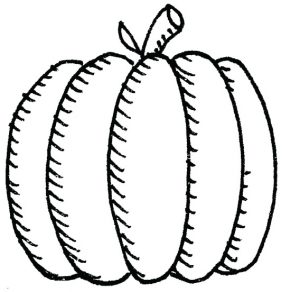 Samhain : First Day of Winter : Death
Samhain : First Day of Winter : Death
Samhain, the festival of the ancestors and the dead that marks the beginning of winter, falls in early May in the southern hemisphere and early November in the northern hemisphere – and on October 31 in popular culture, where it is celebrated as Halloween. This year in the north it falls on November 7. Samhain honours the Wheel of the Year as it turns towards the barrenness of winter, in nature and in our lives, and is a time of withdrawal and withering.
Mythologically, this was when the goddess became the crone, the old one, the wise one – the earth mother who understood, and taught others, that we need darkness and death to have light and rebirth. In some traditions the god descended to the underworld on this day, to await his transformation at the winter solstice; in others he was already there and the goddess returned to be reunited with her consort.
Astronomically, this cross-quarter day falls midway between the autumn equinox and the winter solstice. In the southern hemisphere, it’s when the sun is halfway between the Equator and the Tropic of Cancer, on its way north for winter, and it rises in the same position as it will at Imbolc. In the northern hemisphere Samhain occurs six months later, when the sun is heading south from the Equator down to the Tropic of Capricorn.
Samhain, also known as Halloween, All Souls Eve, Day of the Dead, Feast of Spirits, Shadow Fest and Ancestor Night, marks the end of autumn and the start of the coldness and dark of winter. The crispness and vivid flame-coloured beauty of autumn fades as the energy of the earth withdraws and nature starts to wither and die. Animals begin to migrate or hibernate, and while the grass may become green and lush with the onset of rain, many of the trees are stripped bare, with bitterly cold winds adding to the starkness of the season.
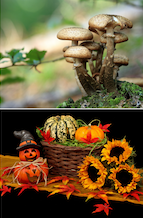 This was the third and last harvest of the year, when anything left in the fields, from wheat and oats to turnips and apples, would be gathered in and stored for the barren months ahead. Snow began to cover the land and fresh food was scarce. Cattle and sheep were brought in from the summer paddocks to the barns, and those animals who couldn’t find food or shelter were slaughtered and preserved for later eating. Wood was chopped and peat stacked for the winter fires, herbs were dried and food was baked and preserved. Families gathered together to prepare and ready themselves for winter, and there was an air of celebration and abundance even as the hard months approached.
This was the third and last harvest of the year, when anything left in the fields, from wheat and oats to turnips and apples, would be gathered in and stored for the barren months ahead. Snow began to cover the land and fresh food was scarce. Cattle and sheep were brought in from the summer paddocks to the barns, and those animals who couldn’t find food or shelter were slaughtered and preserved for later eating. Wood was chopped and peat stacked for the winter fires, herbs were dried and food was baked and preserved. Families gathered together to prepare and ready themselves for winter, and there was an air of celebration and abundance even as the hard months approached.
Symbolically the energy is also about preparing for what’s ahead, harvesting and releasing the things you’ve been holding on to and readying yourself for new challenges and experiences. Winter is a season of introspection and darkness, both metaphorically and literally, which encourages you to slow down and withdraw a little to conserve mental energy. It’s a time for inner reflection and contemplation, of studying the Mysteries – of your magical tradition or your life – and scrying for answers and illumination. At each of the four cross-quarter days the veil between the worlds was considered to be thinner than usual, and at this one people connected with the energy of the ancestors, the spirits and the dead, calling on them for wisdom and knowledge about the future as well as the past.
Samhain was the Celtic New Year, the most important, sacred and magical celebration of the pagan calendar. Rituals were performed, elaborate feasts were held, and hearth fires were extinguished in every home so they could be relit from a special druidic fire in each community, which brought blessings and new light to the coming year, and rekindled the hopes and dreams that had been slumbering.
Ways to celebrate
Samhain is a festival of the dead, but it’s not scary or gloomy – rather it’s a celebration and honouring of those who have passed, and of the memories of all the beautiful times you had with them. It was believed that on this day the ghosts, the gods and the spirits came close to the earth and walked amongst humans, visiting their old homes and checking in with their families, so offerings were made to them in the hope that they would impart their wisdom and reveal the future. Some people set an extra place at the dinner table for their loved ones who had passed over, while others cast spells to bring their spirit back to the land of the living or did mediumship rituals to try to converse.
In Latin America this celebration is still known as the Day of the Dead, el Dia de los Muertos, a four-thousand-year-old ritual where families and friends gather together to pray for, honour and remember those who have died. Catholic traditions have melded into the proceedings, but originally the festival was dedicated to the Aztec goddess Mictecacihuatl, the queen of the underworld who guards the bones of the dead. It’s marked with festivals, parades and visits to cemeteries with offering of flowers, food and other gifts. Candy or chocolate skulls are exchanged to represent the theme of life, death and rebirth so intrinsic to this day, and people communicate with those who have died, petitioning them with prayers as the Celts did at Samhain.
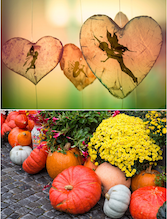 This magical time and its purpose has been conserved in the modern-day festival of Halloween, which celebrates ghosts, witches, bats and magic, and the Christian holidays of All Hallows Eve and All Saints Day. The Christian version echoes the old pagan meaning, with prayers being offered for the souls of those who have crossed over.
This magical time and its purpose has been conserved in the modern-day festival of Halloween, which celebrates ghosts, witches, bats and magic, and the Christian holidays of All Hallows Eve and All Saints Day. The Christian version echoes the old pagan meaning, with prayers being offered for the souls of those who have crossed over.
To absorb the energy of Samhain, prepare a harvest feast, with pumpkins, winter vegetables, nuts, grains, apple pies, cider and spiced wine. Decorate the table with orange and black, dress up in magical costumes and, as night falls, light black candles to illuminate the room and emphasise the deepening shadows. Lay out a plate for your lost loved ones and share your favourite recollections of them, balancing the sombreness of the occasion with happy, funny stories.
After feasting, or instead of if you’d rather celebrate alone, do some divination. Bob for apples, divine the future with nuts or try other psychic games involving the fruits of the harvest. Apples are considered very sacred, and are associated with the faeries and with magic and transformation, with legends telling of enchanted apples with the power of immortality. Cutting one in half crossways reveals a five-pointed star, a symbol of the goddess, and they’ve long been involved in divination rituals, such as peeling one to discover the initial of your future love.
As well as remembering those who have passed, it’s also important to honour those who are still here, so it’s the perfect time to call your parents, visit your grandparents or write to someone who meant a lot to you when you were growing up, to thank them for the moments they shared with you and the influence they had on your life. Too often we don’t recognise someone’s worth until they’ve died, so make sure you celebrate your loved ones while they’re with you, and let the people in your life know how you feel about them. When a friend of mine took his own life, the biggest regret his mates had was that they hadn’t expressed how much they cared about him and how important he was to them while they had the chance.
Samhain is a fire festival, so the element of fire is a big part of it. In ages past, bonfires lit up the long night to ward off evil spirits, purify the land and its people, and bring hope and illumination to the darkness. Today this still goes on across the British Isles, although many of the fires are now lit in the name of Guy Fawkes, which has a different meaning yet still echoes the ancient purpose of farewelling the summer and welcoming the stark, powerful beauty of winter. If you can’t have an outdoor fire, light a small one in your cauldron, or just ignite a black candle, and watch the light chase the shadows away. Toss a symbol of the dying year into the flames so you can start the new one with a fresh slate, or visualise the cleansing of any regrets that are weighing you down.
In the southern hemisphere it can be hard to explain to people that you’re celebrating “Halloween” in May, but if you pay attention to the earth, to nature and to the seasons, it’s clear that this is the time of Samhain and its energy of introspection, transformation and release.
In your journal
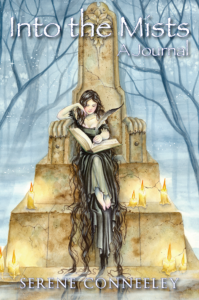
If you’ve lost someone close to you, light a candle for them and revel in all your memories. Look at photos or letters they sent and feel their presence with you. If you believe in an after-life, try to communicate with them, using automatic writing or scrying, or just write your favourite recollections of them in your journal. Look out for signs that they could be near – a whiff of their perfume, their favourite song on the radio, a flash of them out of the corner of your eye. This festival shouldn’t be morbid – it’s about celebrating their life and all that they meant to you, and remembering their impact on your heart.
The energy of Samhain inspires a mood of self-examination and contemplation, so reflect on those you’ve lost to distance or estrangement, and acknowledge anything that has come to an end in your life. You don’t have to fix the problem or make up with people if a relationship has run its course, but honour the good times and the lessons learned, and perform a farewell ritual to release any residual pain and attachment. If you’ve had a painful break up, go through your home and find any reminders of the person, be it photos, their clothes or gifts they gave you, and get rid of them. It doesn’t matter whether you throw them out, post them back, give them to charity or burn them, just let them go so you can start to heal.
As the end of one year and the beginning of the next, this is the perfect time to let go of the energy of the past and of old memories so you can move forward with lightness and strength. Light a black candle and, by its flickering illumination, write out all the worries, frustrations, regrets and seeming failures you’ve held on to over the past twelve months. Visualise the fire of the candle flame burning them away and leaving you purified and refreshed, and breathe in this positive new energy. Then burn the list in the flame, releasing your attachment to those emotions and their power over you.
Also work out which habits and traits you want to bring into the new year, and which you want to leave behind. Examine any negative patterns or behaviours you want to release, or anything you’re scared of or dreading. Samhain is a powerful time for banishing rituals and releasement ceremonies, as they are supported by the energy of the season, so face your fears and relinquish your baggage to the light.
On this mystical, mysterious night, when the Otherworld reaches out and imprints upon ours, tap in to your own crone energy and find the wisdom within to examine your life and your progress. Take a long hard look at where you’re at and what you’re doing, and your actions, motives and beliefs. Consider whether you’re truly following your heart, or if you feel you’ve wasted time this year, pursuing things you don’t really care about, treating your body with less respect than it deserves, being too nice at the expense of your needs. Stand in your power and connect with your inner self and core beliefs, delving deep into your psyche to learn how to be true to yourself and your life path.
This energetic new year is a gateway, a threshold you can cross to move into a new way of being. It can be hard work at times, filled with sometimes painful self-examination and remembering, but out of this darkness comes regeneration, renewal and transformation, and a new sense of personal power and magic.
And here are a couple of Samhain recipes…
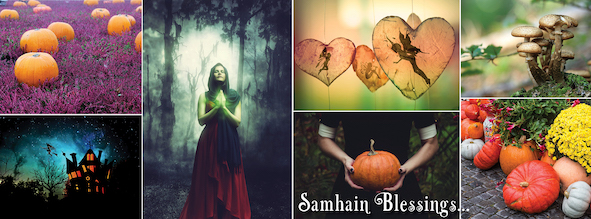


Get Social